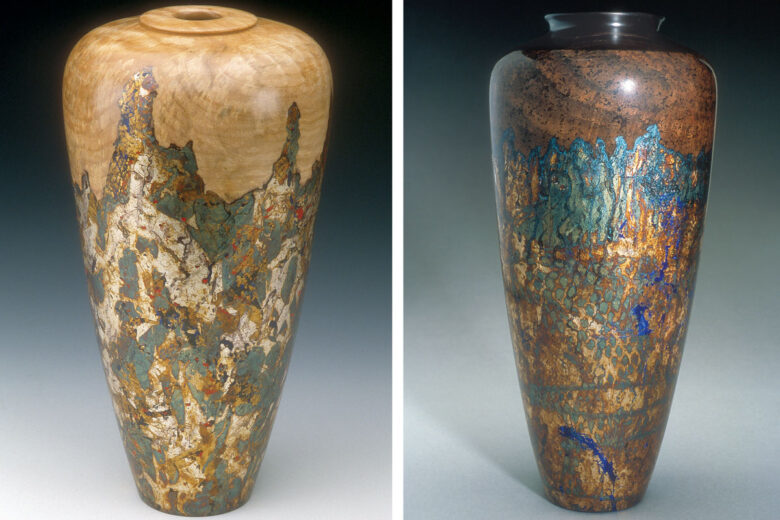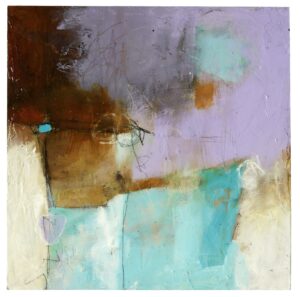Mastering the art of patina is necessary for antique painting and finishing techniques. This guide provides info on how to make authentic antique finishes, which can endow furniture and objects with character, charm, and a sense of history.
Patina is related to aged wood, metal, or leather surfaces. Through various painting and finishing techniques, these objects become interesting pieces with stories.
When it comes to achieving desired effects, there is a range of materials used for antique painting- from oils to acrylics. By picking the right materials, artists can make their creations look amazing while respecting historical accuracy.
Furthermore, studying different finishing techniques can add depth to the artistic process. For instance, ‘distressing’ or ‘antiquing’ includes purposely aging a surface to imitate natural wear and tear. This attention to detail creates a convincing illusion, making the object look truly old- a skillful way to restore antiques and make vintage-inspired pieces.
To utilize these techniques successfully, the following suggestions are worth considering:
- Research; understand historical methods and finishes to accurately reproduce authentic looks.
- Practice; experiment with materials, tools, and methods to hone skills and deepen understanding.
- Patience; perfection may require multiple layers and meticulous attention to detail.
Exploring patina via antique painting and finishing techniques can bring new life to plain objects. The transformation not only improves their visual appeal but also celebrates their past by preserving their unique stories.
Understanding Patina
Patina is the stunning outcome that comes when time and human touch come together with antique objects. This creates a special surface texture and color. It is achieved with painting and finishing techniques, each offering a unique charm.
Here is a table about some antique painting and finishing methods:
| Technique | Description |
|---|---|
| Distressing | Removing or scratching paint layers to give it an old look. |
| Gilding | Applying thin layers of gold leaf to enhance the look. |
| Limewashing | Using lime-based products for a translucent whitewash effect. |
| Antiquing Glaze | A tinted glaze applied to painted surfaces to create an aged effect. |
| Frottage | Rubbing powdered pigments onto a wet paint surface and removing it with something textured. |
It takes skill and knowledge to do these techniques correctly. There are also other patina techniques like marbling and crackling.
Patina lets us see beauty in imperfections and tell stories through ancient objects. Why not explore this enchanting world? Discover your own journey into patina. Unlock new artistic expression possibilities.
Don’t miss out on the chance to upgrade your antique painting and finishing skills. Patina is captivating art lovers and collectors. Unleash your imagination with the countless possibilities that await you. Embrace patina and make your precious antique items come alive today.
Tools and Materials
Tools and materials are essential for creating masterpieces in the realm of antique painting. They lay the foundation for creating works of art that embody history and sophistication. Let’s explore the key elements of this process.
- Brushes: A must-have tool, brushes come in various shapes and sizes. From fine detailing to broad strokes, they guarantee precision and versatility.
- Paints: Quality paints with rich pigmentation and various finishes are a must. Whether oil- or water-based, they bring each stroke to life and enhance the overall aesthetic.
- Finishing Materials: Finishing materials like varnish and lacquer bring out the beauty of antique pieces. Their careful application grants longevity and accentuates the patina effect.
Digging deeper into the world of tools and materials reveals even more fascinating aspects. Understanding their importance helps master this intricate craft.
Embrace these tools and materials for an opportunity to explore the captivating realm of antique painting. Unlock your creative potential and embark on a journey where history and artistry meet. Don’t miss out on this remarkable art form before it becomes a lost treasure in the hustle of modernity. Seize the chance today!
Preparing the Surface
- Remove any existing paint or finish with the right tools or agents. This helps you start fresh and have better adhesion for the new paint or finish.
- Fill in cracks, holes, or gouges with wood filler, spackle, or epoxy.
- Sand the repaired areas so it’s even.
- Clean the surface with mild detergents and water to remove dirt, grease, and grime. Then rinse and let it dry.
- Sand the entire surface with fine-grit sandpaper to make a smooth texture.
- Prime the surface with a high-quality primer for antique finishes. Seal porous surfaces, improve paint adhesion, and enhance color vibrancy.
- Apply the base coat in your chosen color. Let it dry before antique painting techniques.
John Smith, a renowned antique restoration expert, suggests traditional methods like hand scraping and hand planing during the surface preparation process when possible. It adds to the finished piece’s character and charm.
Now you are ready to begin your antique painting and finishing journey! Transform ordinary objects into timeless works of art. So get creative and bring new life to cherished heirlooms and forgotten treasures.
Techniques for Creating Patina
Creating patina on antiques requires skill and knowledge. Here’s a look at the methods used to create this unique effect.
- Chemical Patination: Using substances like vinegar or ammonia to speed up oxidation and give metal surfaces an aged look.
- Paint Distressing: Removing layers of paint to give items a weathered look. Sanding, scraping, crackle and glaze mediums can be used.
- Antiquing Wax: Applied over paint to give depth and highlight details. Adds an aged feel and protects from wear and tear.
- Faux Finishes: Layering and blending paints to mimic materials like marble or wood grain.
There are more specialized methods. Experiment with colors and application techniques to get unique results.
Patina masters need to be creative and go beyond traditional methods. Get out of your comfort zone and explore new ways to create stunningly aged finishes.
Start experimenting today. Uncover hidden beauty in antiques and transform pieces into works of art. Let your imagination run wild!
Applying Finishes
Applying finishes is an essential step to make antique paintings look their best. Here’s a guide to help master it:
- Prep the Surface: Sand and wipe down with a damp cloth.
- Pick the Right Finish: Varnish, wax, lacquer or shellac? Each have unique characteristics.
- Apply the Finish: Use a brush or pad and apply it evenly. Avoid drips and streaks.
- Waiting Time: Respect the drying time between coats for proper curing.
- Sand & Buff: Sand the surface with fine-grit sandpaper and buff to make it shine.
Tips:
- Test a small area first for compatibility.
Now for a remarkable story:
Frederick discovered an ancient manual with a special mix of pigments. This mix produced an iridescent effect when applied layer by layer. Frederick experimented with it and restored vintage furniture pieces in a unique way. His work attracted art lovers from all around the world.
Applying finishes is an art form. With these techniques and a bit of inspiration, you too can give antique treasures a timeless beauty.
Maintaining and Preserving Patina
Preserving patina is essential to keep antique paintings and finishes looking beautiful. Here’s how you can do it:
- Clean regularly with a soft, lint-free cloth or feather duster. Be careful with abrasive cleaners or harsh chemicals as they can damage the patina.
- Stop sunlight from striking your antiques. Hang curtains or blinds to limit UV rays.
- Keep humidity levels steady. High moisture leads to corrosion and patina deterioration. Use dehumidifiers or humidifiers depending on your climate.
- Don’t touch the antiques with your bare hands. Oils, dirt, and moisture will ruin the patina over time.
- If the patina is damaged, seek professional restoration. They have the skills to repair minor flaws while preserving it.
Also, store antiques in cool and dry places. This will prevent mold and insect infestations.
To sum up, clean regularly, protect against sunlight and humidity, don’t touch, get professional help, and store antiques properly. By following these steps, your antiques will stay in good condition for generations.
Conclusion
The realm of antique painting and finishing is captivating. We have dived into a variety of techniques and methods to acquire the ideal patina. From faux finishes to distressing techniques, we’ve covered it all.
It is essential to consider what we have learnt. By understanding the diverse patina types and the tools needed for every technique, we can start our very own artistic trip of transforming drab items to amazing works of art.
We haven’t gone deep into the significance of experimentation to grasp the supreme patina. Even though the techniques discussed in this article are useful, it is through trial and error that real proficiency is achieved. Each piece has its own response to different techniques, and it is through exploration that we can form our own special style.
One last pro tip: always remember to protect your work. A protective clear coat or wax will keep the beauty of your patina for years. With this newfound knowledge and adventurous spirit, go ahead and let your imagination beam through the art of patina.
Frequently Asked Questions
Q: What is patina?
A: Patina refers to the natural aging or oxidation process that occurs on the surface of materials such as metal or wood over time, resulting in a rich and unique finish.
Q: Why is patina desirable in antique painting and finishing?
A: Patina adds character, depth, and a sense of history to antique pieces. It enhances their beauty and value, making them more appealing to collectors and enthusiasts.
Q: How can I create a patina on metal?
A: There are various techniques to achieve a patina on metal, such as using chemical solutions, heat or flame, natural oxidation, or applying special aging products. Each method requires specific tools and expertise.
Q: Are there any risks involved in patina techniques?
A: Some patina techniques involve the use of chemicals or heat, which can be hazardous if not handled properly. It is important to follow safety precautions, including wearing protective gear and working in a well-ventilated area.
Q: How can I preserve and maintain the patina on antique pieces?
A: To maintain the patina on antique pieces, avoid using abrasive cleaners or polishes that can remove the finish. Instead, gently clean the surface with a soft cloth and periodically apply a suitable protective coating.
Q: Can I replicate a patina on new items to make them look antique?
A: Yes, it is possible to replicate a patina on new items using various artificial aging techniques. However, achieving an authentic-looking patina requires skill and knowledge of the specific materials and processes involved.



